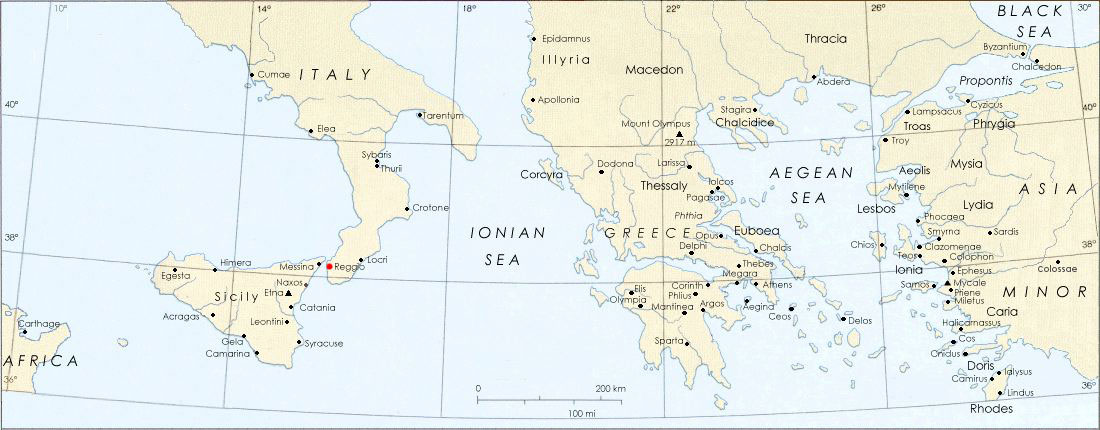Now Reggio; a celebrated Greek town on the coast of Bruttium, in the south of Italy, was situated on the Fretum Siculum, or the strait which separates Italy and Sicily. Rhegium was founded about the beginning of the first Messenian War, B.C. 743, by Aeolian Chalcidians from Euboea and by Doric Messenians, who had quitted their native country on the commencement of hostilities between Sparta and Messenia. Even before the Persian Wars Rhegium was sufficiently powerful to send 3000 of its citizens to the assistance of the Tarentines, and in the time of the elder Dionysius it possessed a fleet of eighty ships of war. This monarch, having been offended by the inhabitants, took the city and treated it with the greatest severity. Rhegium never recovered its former greatness, though it still continued to be a place of considerable importance.The Rhegians having applied to Rome for assistance when Pyrrhus was in the south of Italy, the Romans placed in the town a garrison of 4000 soldiers, who had been levied among the Latin colonies in Campania. These troops seized the town in B.C. 279, killed or expelled the male inhabitants, and took possession of their wives and children. The Romans were too much engaged at the time with their war against Pyrrhus to take notice of this outrage; but when Pyrrhus was driven out of Italy they took signal vengeance upon these Campanians, and restored the surviving Rhegians to their city. Rhegium was the place from which persons usually crossed over to Sicily, but the spot at which they embarked was called Columna Rhegina (Torre di Cavallo), and was 100 stadia north of the town. See Axt, Zur Topographie von Rhegion und Messana (Grimma, 1887). (Harpers Dictionary of Classical Antiquities, 1898)
